Hi, this thread is to document what I've done so far for my own memory's sake, and to possibly gather advice from the wise and curious for future improvements to this amp.
I am an electrical engineer and started this project three years ago when I was still in university. They don't cover tubes much in class anymore, but there are some similarities to other trans-conductance devices, and working with these devices is a very interesting hobby to have.
So,
I bought the AC4TV new in 2012 and in 2014 decided to get rid of the 16 ohm 10" driver and the ported enclosure, and build a cabinet with an 8 ohm 12" driver in an open back configuration. I have heard that this amp can take the 8 ohm load, and If the power section can keep up, It may even increase the power output from 4 watts to 6? 7? maybe 8 watts? Source: Cool Information About The Vox AC4TV Series | Telecaster Guitar Forum
I also wanted to install a variable voltage regulation circuit to give me control over my tube overdrive sound at lower levels.
I used the information found here for the VVR circuit: InfoCentre - VCB/VVR kit (cathode biased amps)
I chose the Eminence Legend GB128 which is marketed to sound like a British greenback type speaker. I liked the strong peak at 2-3KHz in the response curve and thought it would help me achieve what I was looking for.
The first four photos are from when I did the initial work in 2014
After some tests, I found that the VVR circuit worked quite well, and I have the ability to get lots of real tube overdrive at much lower volume than before. One side effect of the VVR CCT is that the bass is accentuated as I lower the B+ rail voltage. This leaves me with about 3-6dB more bass at the lowest voltage position, relative to the rest of the frequency spectrum, when compared with full voltage operation of the tubes. The 12AX7 and the EL84 are both being fed from the VVR circuit which might account for the change in freq response since the preamp stages do not remain at a constant B+ voltage. I think it's more likely that the new lower output load load drawing too much current from the mains transformer at high output levels, causing the bass to attenuate...It's actually more of a feature than a bug though, because I don't want a ton of bass muddying my sound at higher volumes, but at lower levels a little more low end is welcomed. 🙂
After the initial work in 2014, I began to want a better tone than what I was getting; there was a pronounced peak in the response in the 2-4KHz range, right where the "VOX Chime" is probably located, but with my new cabinet and speaker, the chime was now way too pronounced. Turning the volume up was a recipe for a earsplitting chimey ringing response that just hurt to listen to.
My first try at fixing this problem was to bypass the tone stack in the amp; the tone stack is essentially a 1st order treble boost and a 1st order low pass that you can sweep between with a 500K potentiometer. This solution did cut away a good amount of the overbearing sibilance in the 2-4KHz range, but also took the rest of the treble range and a good deal of the lower mids with it.
My second try was to disconnect C15 the treble bleed cap from the second stage of the preamp, hoping to get some treble frequencies back; this worked, but it worked too well, the amp sounded more like a radio speaker then a guitar amplifier.
The third time is the charm they say, and this seemed to prove true for me as I now have the amp sounding how I like. Here is what I did:
C5 from 4n7 to 100n - To open up the preamp and let more bass frequencies through.
C4 from 220pf to 100pf - I used a frequency generator playing test tones through the amp as I alternated different capacitance values for this circuit element until the presence peak missed the 2-4KHz range instead of boosting it. The 100pf value causes the boost to occur at frequencies at and above 5KHz. It adds "air" and "presence" to the sound now, without making your ears bleed!
C3 was removed because I want to be able to turn the treble boost up or down without engaging an unwanted lowpass filter.
C15 was decreased from 470pf to 220pf; this is because the capacitor was actually draining all frequencies from about 1000-1500 and above. Now C15 only starts to drain frequencies above 2-3KHz. This has the efffect of "opening up" the voicing of the amp. If this amp were compared to a singer, it would be like the vowel shape has changed to a more open one, and the level of clairty and detail I can hear is much better now.
Overall, changing C4 has eliminated the 2-4KHz ringing that was assaulting my ears, and combined with the coupling cap change (C5) and the treble bleed change (C15), a sweetness and detail that I have never heard before has emerged. The overdrive sounds smoother and the bass is even better than it was before. I am glad this worked so well; I was worried that I chose the wrong speaker, but it turns out I just needed to voice the amp differently.
I threw in a standby switch for convenience, and I installed a wall plug so that I can plug my 1Spot pedalboard power supply right into my amp which is very convenient. No more searching for a second plug or bringing along an extension cord or splitter. I wired the plugs to the main power switch so everything turns on and off together now.
I am wondering what else I can do to improve the sound on this amp; one thing I still need to try is putting some nice tubes in. I have a ruby tubes 12AX7 and an unknown brand EL84 running right now. I am open to recommendations for tubes to try. Should I upgrade my power section? Should I get a better output transformer?
Cheers,
Peter Wing
I am an electrical engineer and started this project three years ago when I was still in university. They don't cover tubes much in class anymore, but there are some similarities to other trans-conductance devices, and working with these devices is a very interesting hobby to have.
So,
I bought the AC4TV new in 2012 and in 2014 decided to get rid of the 16 ohm 10" driver and the ported enclosure, and build a cabinet with an 8 ohm 12" driver in an open back configuration. I have heard that this amp can take the 8 ohm load, and If the power section can keep up, It may even increase the power output from 4 watts to 6? 7? maybe 8 watts? Source: Cool Information About The Vox AC4TV Series | Telecaster Guitar Forum
I also wanted to install a variable voltage regulation circuit to give me control over my tube overdrive sound at lower levels.
I used the information found here for the VVR circuit: InfoCentre - VCB/VVR kit (cathode biased amps)
I chose the Eminence Legend GB128 which is marketed to sound like a British greenback type speaker. I liked the strong peak at 2-3KHz in the response curve and thought it would help me achieve what I was looking for.
The first four photos are from when I did the initial work in 2014
After some tests, I found that the VVR circuit worked quite well, and I have the ability to get lots of real tube overdrive at much lower volume than before. One side effect of the VVR CCT is that the bass is accentuated as I lower the B+ rail voltage. This leaves me with about 3-6dB more bass at the lowest voltage position, relative to the rest of the frequency spectrum, when compared with full voltage operation of the tubes. The 12AX7 and the EL84 are both being fed from the VVR circuit which might account for the change in freq response since the preamp stages do not remain at a constant B+ voltage. I think it's more likely that the new lower output load load drawing too much current from the mains transformer at high output levels, causing the bass to attenuate...It's actually more of a feature than a bug though, because I don't want a ton of bass muddying my sound at higher volumes, but at lower levels a little more low end is welcomed. 🙂
After the initial work in 2014, I began to want a better tone than what I was getting; there was a pronounced peak in the response in the 2-4KHz range, right where the "VOX Chime" is probably located, but with my new cabinet and speaker, the chime was now way too pronounced. Turning the volume up was a recipe for a earsplitting chimey ringing response that just hurt to listen to.
My first try at fixing this problem was to bypass the tone stack in the amp; the tone stack is essentially a 1st order treble boost and a 1st order low pass that you can sweep between with a 500K potentiometer. This solution did cut away a good amount of the overbearing sibilance in the 2-4KHz range, but also took the rest of the treble range and a good deal of the lower mids with it.
My second try was to disconnect C15 the treble bleed cap from the second stage of the preamp, hoping to get some treble frequencies back; this worked, but it worked too well, the amp sounded more like a radio speaker then a guitar amplifier.
The third time is the charm they say, and this seemed to prove true for me as I now have the amp sounding how I like. Here is what I did:
C5 from 4n7 to 100n - To open up the preamp and let more bass frequencies through.
C4 from 220pf to 100pf - I used a frequency generator playing test tones through the amp as I alternated different capacitance values for this circuit element until the presence peak missed the 2-4KHz range instead of boosting it. The 100pf value causes the boost to occur at frequencies at and above 5KHz. It adds "air" and "presence" to the sound now, without making your ears bleed!
C3 was removed because I want to be able to turn the treble boost up or down without engaging an unwanted lowpass filter.
C15 was decreased from 470pf to 220pf; this is because the capacitor was actually draining all frequencies from about 1000-1500 and above. Now C15 only starts to drain frequencies above 2-3KHz. This has the efffect of "opening up" the voicing of the amp. If this amp were compared to a singer, it would be like the vowel shape has changed to a more open one, and the level of clairty and detail I can hear is much better now.
Overall, changing C4 has eliminated the 2-4KHz ringing that was assaulting my ears, and combined with the coupling cap change (C5) and the treble bleed change (C15), a sweetness and detail that I have never heard before has emerged. The overdrive sounds smoother and the bass is even better than it was before. I am glad this worked so well; I was worried that I chose the wrong speaker, but it turns out I just needed to voice the amp differently.
I threw in a standby switch for convenience, and I installed a wall plug so that I can plug my 1Spot pedalboard power supply right into my amp which is very convenient. No more searching for a second plug or bringing along an extension cord or splitter. I wired the plugs to the main power switch so everything turns on and off together now.
I am wondering what else I can do to improve the sound on this amp; one thing I still need to try is putting some nice tubes in. I have a ruby tubes 12AX7 and an unknown brand EL84 running right now. I am open to recommendations for tubes to try. Should I upgrade my power section? Should I get a better output transformer?
Cheers,
Peter Wing
Attachments
-
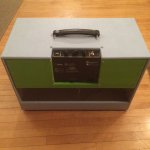 10648258_10153281584315205_2729722405997769840_o.jpg343.6 KB · Views: 511
10648258_10153281584315205_2729722405997769840_o.jpg343.6 KB · Views: 511 -
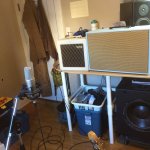 12465925_10153281584110205_855483400448878585_o.jpg377.3 KB · Views: 409
12465925_10153281584110205_855483400448878585_o.jpg377.3 KB · Views: 409 -
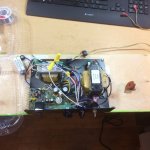 12486047_10153281584020205_3136536620521186083_o.jpg291.4 KB · Views: 392
12486047_10153281584020205_3136536620521186083_o.jpg291.4 KB · Views: 392 -
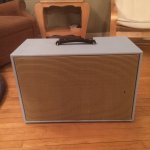 12489469_10153281584260205_4092713361285789672_o.jpg406.5 KB · Views: 397
12489469_10153281584260205_4092713361285789672_o.jpg406.5 KB · Views: 397 -
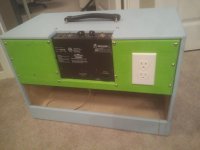 20171107_085831.jpg90.4 KB · Views: 416
20171107_085831.jpg90.4 KB · Views: 416 -
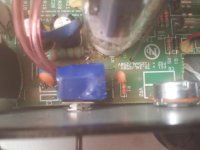 20171107_090135.jpg109.8 KB · Views: 324
20171107_090135.jpg109.8 KB · Views: 324 -
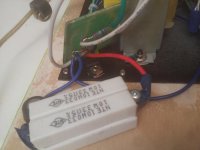 20171107_090219.jpg90.7 KB · Views: 340
20171107_090219.jpg90.7 KB · Views: 340 -
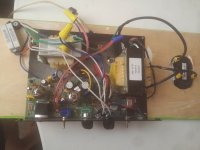 20171107_090231.jpg117.5 KB · Views: 476
20171107_090231.jpg117.5 KB · Views: 476 -
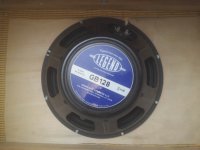 20171107_090310.jpg91.5 KB · Views: 444
20171107_090310.jpg91.5 KB · Views: 444 -
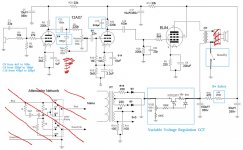 7660216166_92534a7104_b.jpg232.4 KB · Views: 549
7660216166_92534a7104_b.jpg232.4 KB · Views: 549
Last edited:
Thanks for posting your project. There are endless variations on the two tube amp and I like to check out different ideas.
A new OPT trafo could be a next step to try.
My Peavey Royal 8 has acquired
A pentode triode switch
A 6AK5 1st stage
LED clipping
Big muff tone stack after 2nd triode
Etc etc
And all mods switchable in/out
Hours off fun and experimentation.
The only thing that hasn't improved is my guitar playing.
Cheers
JimG
A new OPT trafo could be a next step to try.
My Peavey Royal 8 has acquired
A pentode triode switch
A 6AK5 1st stage
LED clipping
Big muff tone stack after 2nd triode
Etc etc
And all mods switchable in/out
Hours off fun and experimentation.
The only thing that hasn't improved is my guitar playing.
Cheers
JimG